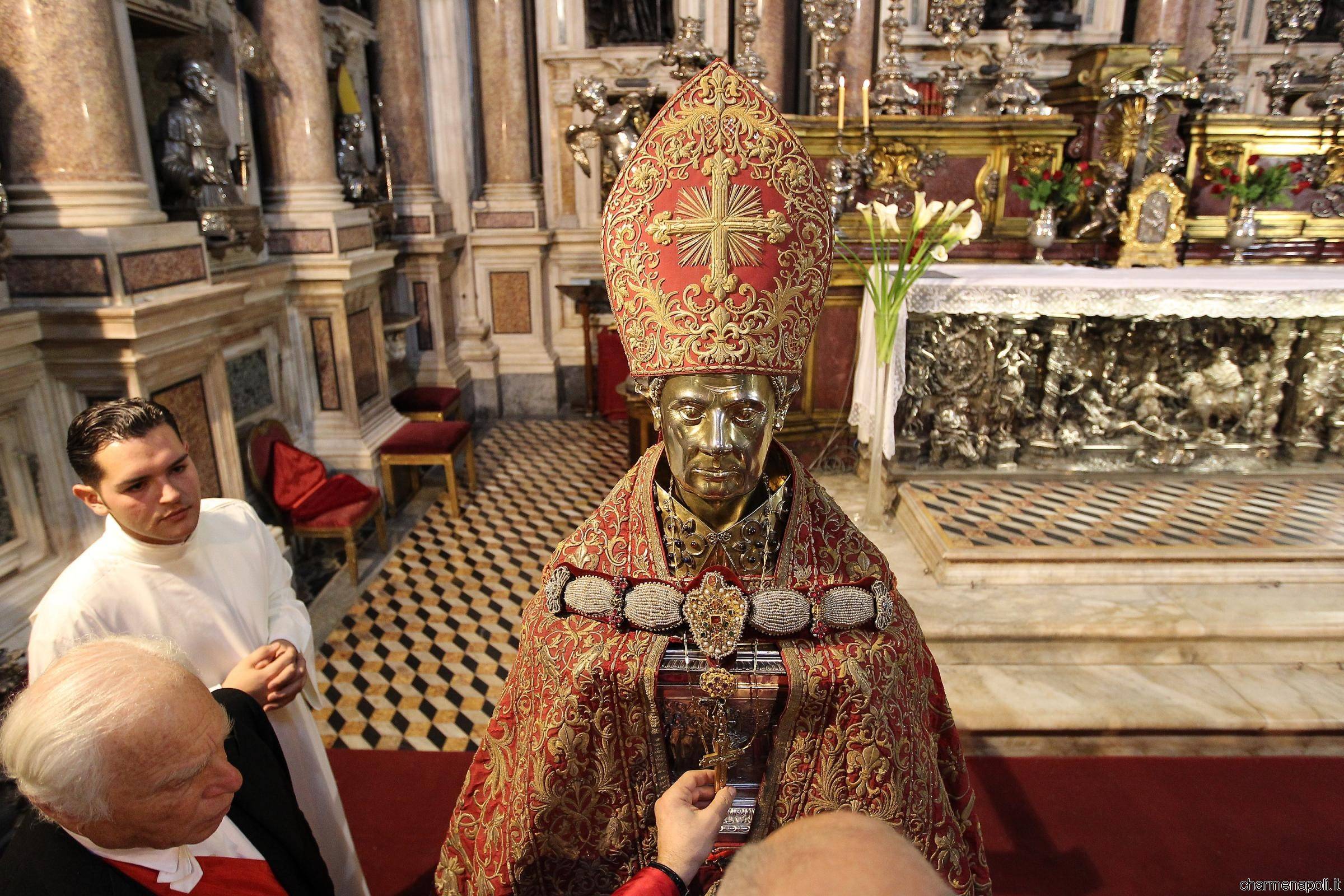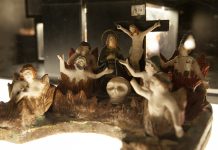Churches, basilicas, sanctuaries: cultic places full of treasures and works of art, received as donations for a “grazia ricevuta” (favour received). They were built after a miraculous event or by divine inspiration, and are supported by the effort and charity of people. Let’s start a trip among the most famous sanctuaries. The Sanctuary of Pompeii devoted to Virgin of del Rosary. The faithful ask her favours especially during the months of May and October. It was built thanks to beato Bartolo Longo in 1876 and its walls are covered with the many ex voto received.
The most venerated saint of Naples is San Gennaro, the city patron. His remains are kept in the Chapel of Succorpo inside the marvellous Cathedral, built in the beginning of 14th century where once stood the basilica of Santa Restituita and the paleochristian baptistery of San Giovanni in Fonte. Every year since centuries the blood of the Saint liquefies attracting thousands of faithful. The remains of Santa Patrizia of Costantinopoli lay since 1864 in San Gregorio Armeno convent in the crèche street. Her bloody liquefies every Tuesday and on the 25th of August.[charme-gallery]
Madonna dell’Arco, a hamlet of Sant’Anastasia, is famous for the devotion of battenti and fujenti, who manifest their devotion running and singing. Around the half of 16th century a small painting depicting the Holy Virgin started to bleed after the stroke of a pall-mall by a guy, who was immediately killed after that. The holy image started to be venerated by the people thanks to its miracles. In 1593 it was started the building of the sanctuary to keep it more appropriately, ended in 1610. Today, sanctuary of Madonna dell’Arco houses thousands of silver ex voto and many votive tablets depicting the miracles received during the centuries.
In Mercogliano (Avellino), at the foot of Mount Partenio, at circa 1000 m of height, stands the Sanctuary of Montevergine. The hermit San Guglielmo from Vercelli (11th-12th century) choose that place as his retire and founded the abbey where today lay his remains. Inside the Sanctuary is venerated the painting of Madonna of Montevergine. Into the complex still stand archaeological remains, jewels and works of art. In the stunning cathedral of Salerno, devoted to Santa Maria degli Angeli and San Matteo, lay the remains of this Apostle. The Baroque façade with a 1600s staircase and the ample colonnade with Roman tombs and the monumental bronze door made in Constantinople in 1099 are worth a visit.[charme-gallery]
The Duomo of Amalfi dominates the principal square from the top of a high staircase. Built around the second half of 11th century, it became a cultic place only in 1208 with the arrival of Saint Andrew remains. It is still possible to see the original 10th century cathedral with its cloister of Paradise, a cemetery built among 1266 and 1268.
Back in Naples, in the basilica del Carmine Maggiore is kept the image of Madonna Bruna (“dark”, for the colour of her skin), a painting of Tuscany school made in 13th century, which receives a lot of popular devotion. In Gesù Nuovo Church lay the remains of Giuseppe Moscati, the “saint doctor”. Its tomb is a popular destination among faithful, pushed by the force of faith and the desperate need for help. Gesù Nuovo is absolutely stunning and typically Baroque. An invitation to wonder and to a rest for the soul. Just like the other holy places in Campania region.[charme-gallery]

 Italiano
Italiano














